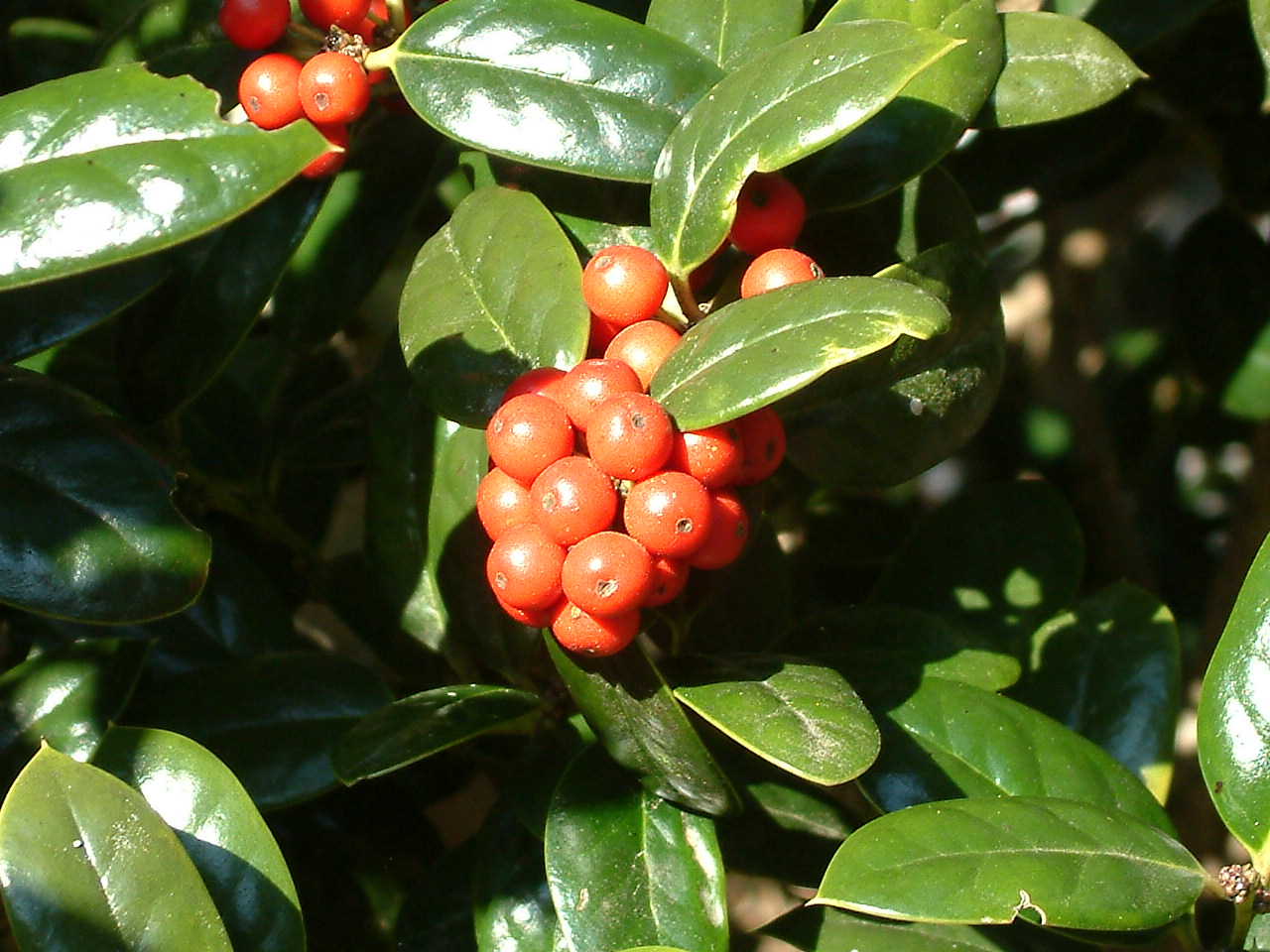
by Beth Bolles | Feb 18, 2014
Looking for a new shrub or small tree this year? Interested in one that is low maintenance and offers beautiful green color? Why not try a holly.
Hollies can be found in landscapes throughout North Florida. Many times these plants are used in foundation plantings around homes. They can help make the transition from the hard lines of a home to other parts of the yard. In other landscapes, hollies make an excellent screen, dividing property or blocking a view.
Because hollies are commonplace, they may be overlooked by homeowners who want to add an attractive new plant to the landscape. Hollies have many uses and there are new selections entering the market worth considering.
In general hollies will not need a great amount of maintenance. Once established most species will require only occasional water, fertilizer, and pruning. Many hollies have even grown well under neglected conditions. If you are one that keeps holly plants pruned as hedges, you will need to watch for the scale insect and spray plants with a horticultural oil every year.
When selecting a holly plant, it is good to know a little about the area where you want to place the plant. Hollies vary in size and ability to tolerate wet soil, so it is important to match a species with your specific site. Also consider holly leaf shapes when using the plants in areas where people walk. Some holly leaves are very stiff and sharp and could injury visitors to you home or be a nuisance when you are working in the yard.
If you are interested in the added beauty of holly berries during the year, remember to select a female plant.
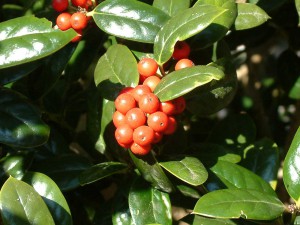
Hollies also attract bees to the landscape.
Credit: Beth Bolles, UF IFAS Extension Escambia County
Tree form hollies that you may select include the American holly (Ilex opaca), Savannah holly (Ilex x attenuata ‘Savannah’), and the Burford holly (Ilex cornuta ‘Burfordii’). All three plants will need well-drained soil. The American and Savannah holly will both reach heights between 20 and 40 feet and have a pyramidal growth form. The Savannah holly leaves will be a lighter green color than the leaves of other holly species. Burford holly has thick dark green leaves and grows about 12-15 feet in height over time.
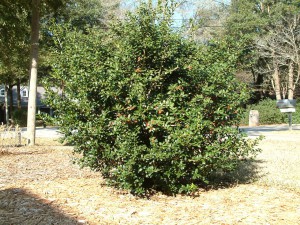
Burford holly is a beautiful holly that gives birds a place to hide.
Credit: Beth Bolles, UF IFAS Extension Escambia County
If you have a wet site, consider the Dahoon holly which can be a specimen plant or used as a screen. This plant will develop attractive grayish bark and grow about 20 feet in height with more of a spread than the previously mentioned hollies.
There are medium-sized hollies that make excellent specimen plants about 12 feet in height. ‘Festive’ holly has dark green foliage and forms dense growth in a pyramidal form. The ‘Robin’ holly has a similar growth form but displays beautiful reddish new growth. Both of these plants will need well-drained soil and full sun or partial shade.
For those areas that require smaller evergreen plants, consider a ‘Bordeaux’ yaupon holly. These plants will grow about 4 feet in height and spread and form a dense growth of stiff stems with small leathery leaves. Since these plants keep a naturally round form it is not necessary to shear them. Both hollies will tolerate a wide range of soil conditions and require little maintenance once established.
by Blake Thaxton | Feb 11, 2014

Aquaponics is an exciting system where fish and plants grow in harmony. The aquaponic system can be a fun project for the home gardener but can also become a successful farming venture. Come and learn the basics of growing fish and plants together in an AQUAPONICS system.
Date: February 27th
Time: 8:00am-3.30pm
Location: UF/IFAS WFREC – 4253 Experiment Rd. Hwy 182, Jay, FL 32565
Cost: $45 – Lunch included

Register here or at ap2014.eventbrite.com
For more information call:
Rick O’Connor: (850) 475-5230 or roc1@ufl.edu
Chris Verlinde: (850) 623-3868 or cmverlinde@gmail.com
Blake Thaxton: (850 )623-3868 or bthaxton@ufl.edu
by Larry Williams | Feb 11, 2014
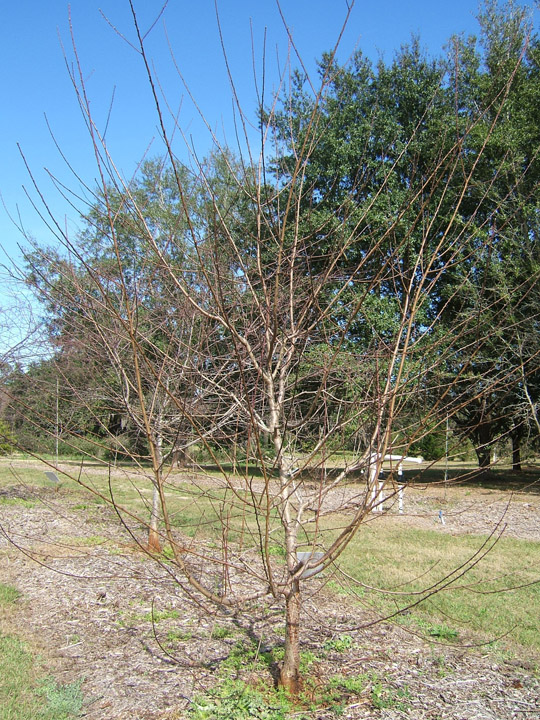
Dormant Peach Tree. Image Credit UF IFAS Environmental Horticulture Department
It is hard to believe with all of this recent cold weather, but now is the time to plant fruit trees in the Florida Panhandle. When planning what type of fruit tree to plant, correct cultivar selection should be the top priority.
The dooryard fruit producer oftentimes finds it difficult to choose the correct fruit cultivar for this area. An inappropriate choice results in disappointment when home gardeners find that they have paid for, planted and cared for fruit trees that are not adapted to the Northwest Florida climate.
Weather is probably the most important factor determining where certain fruits can and cannot be grown.
Most fruits which grow in the northern part of Florida are deciduous, which means that during the winter the trees lose their leaves and go into a period of dormancy, or rest.
During this rest period, the tree must be exposed to chilling temperatures. This exposure to the cold prepares the plant to resume active growth in spring. Temperatures below 45°F accumulated throughout winter determines the total hours of chilling. Species differ in the amount of chilling they need. This is known as a plant’s chilling requirement. Lack of enough chill hours result in sparse foliage and little to no flower production. And if there are no flowers, there will be no fruit.
North Florida receives between 400 to 650 hours below 45°F during the average winter. This provides enough chill hours for a few apple cultivars such as Anna, Ein Shemer, Dorsett Golden, TropicSweet and Shell. However, it does not provide the chill hours required for many of the more common varieties such as Red Delicious and Golden Delicious.
This same environmental factor holds true for most deciduous fruit trees. For example, some of the better known peach cultivars, such as Elberta and Bell of Georgia, perform poorly here following most winters. Both require roughly twice as many chill hours as the Panhandle receives during most winters. There are a few peach cultivars that perform OK in our area.
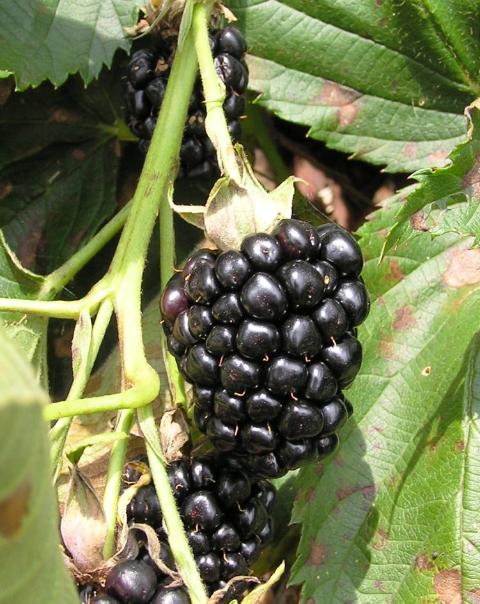
Blackberry Fruit. Photo Credit: Theresa Friday, Santa Rosa County, UF IFAS Extension
The results of selecting the wrong cultivar is only one of the disappointments experienced by those wishing to grow fruits in North Florida. Even when the correct cultivar is selected, many fruit enthusiasts (people who have dreams of homemade peach cobbler, apple pies, plum jelly, etc.) are disappointed to see insects eating their fruit, diseases causing their fruit to rot or possibly all their fruit falling to the ground before it is ready to be eaten.
In order to be successful with fruit production in North Florida, a person needs to ask a lot of questions before planting the first plant.
- Which cultivars grow well here?
- How much care is needed to grow this type of fruit?
- Do I have the time to devote to pruning, spraying, fertilizing and watering?
If you don’t know the answers to these questions, talk to a knowledgeable employee at a local, reputable nursery, consult the Dooryard Fruit Selection publication, or call your UF IFAS Extension Office before choosing to plant fruit trees this winter.
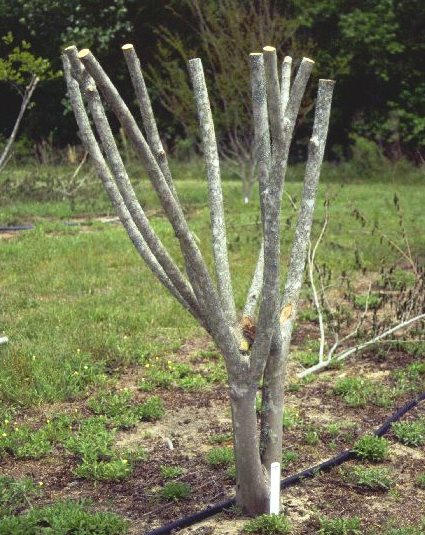
by Gary Knox | Feb 11, 2014
This is the time of year when we often see crapemyrtles unnecessarily topped: main stems that are several years old are cut back, often leaving branch stubs 2 – 5 inches or more in diameter. Topping is sometimes called heading, stubbing, rounding and dehorning.
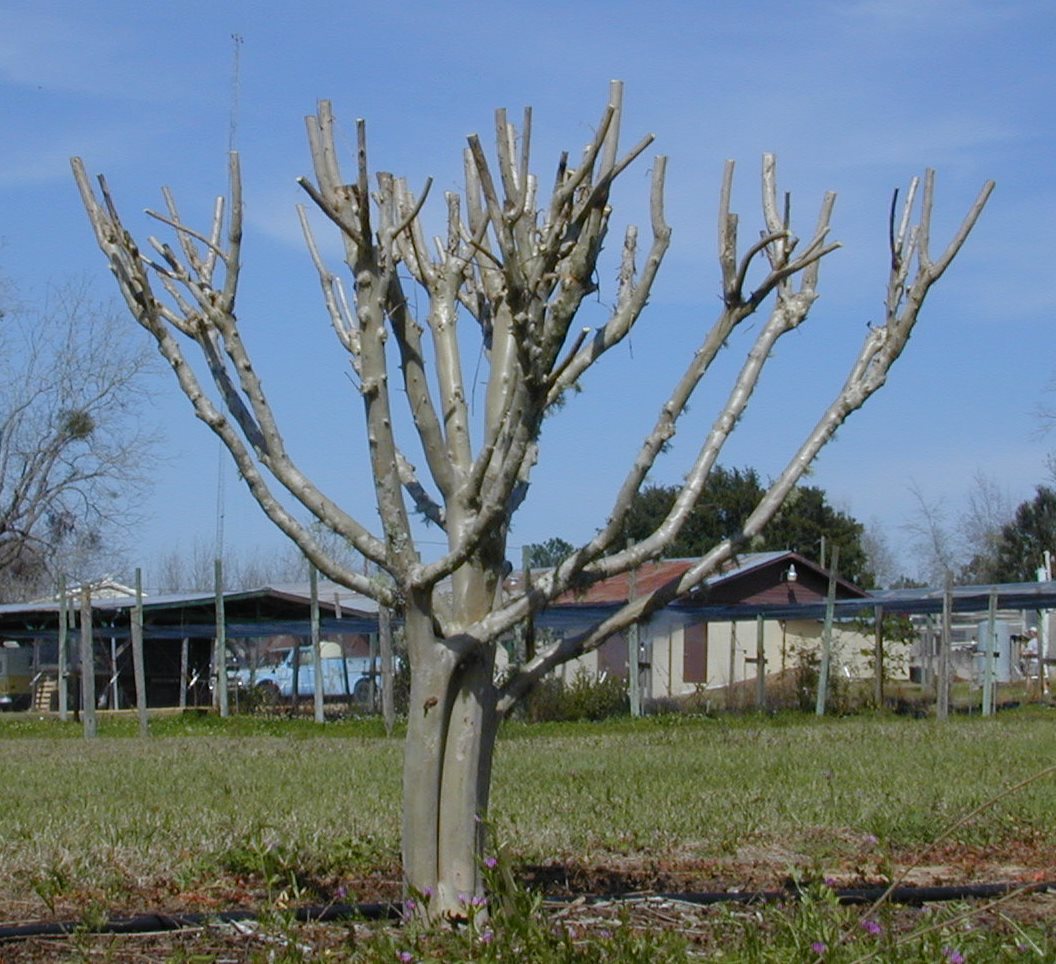
Figure 1. Topping is the drastic removal of large-diameter wood (typically several years old) with the end result of shortening all stems and branches. Topping crapemyrtle is often referred to as “crape murder” because topping usually is not recommended for crapemyrtle. Image Credit Dr. Gary Knox
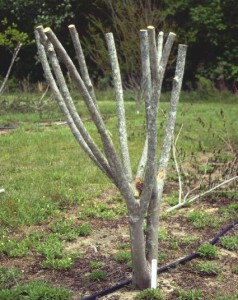
Figure 2. Topping is the drastic removal of large-diameter wood (typically several years old) with the end result of shortening all stems and branches. Topping crapemyrtle is often referred to as “crape murder” because topping usually is not recommended for crapemyrtle. Image Credit Dr. Gary Knox
In the case of crapemyrtles, another name for this practice is “crape murder”. Topping a crapemyrtle is almost always unnecessary. Because people have seen this done in previous years, home owners often mimic this practice in their own yards, not realizing the unfortunate consequences.
Research at the University of Florida, detailed in this linked publication, found that topping crapemyrtle (“crape murder”) delays flowering up to one month. In other words, unpruned trees may begin flowering in June whereas topped trees don’t flower until July. This research also found topping reduced the number of flowers and shortened the flowering season. Finally, topping stimulated more summer sprouting from roots and stems. Sprouting results in greater maintenance since sprouts are usually removed to maintain an attractive plant appearance.
Unfortunately, landscape professionals and home owners often must maintain crapemyrtles that others planted, and so must deal with the consequences of poor cultivar selection and/or placement. If a crapemyrtle requires routine pruning to fit into its surroundings, it should be replaced with a smaller maturing cultivar. Dwarf crapemyrtles mature at a height of 5 feet; medium crapemyrtle cultivars grow up to about 15 feet in height, and tall or tree-size crapemyrtle cultivars exceed 15 feet and often grow to 20 – 30 feet tall in 10 years.
Best locations for crapemyrtle are areas in full sun with plenty of room for the cultivar size and away from walkways and roads. Proper selection of crapemyrtle cultivar and proper placement in the landscape can result in a low maintenance crapemyrtle without the need for significant pruning.
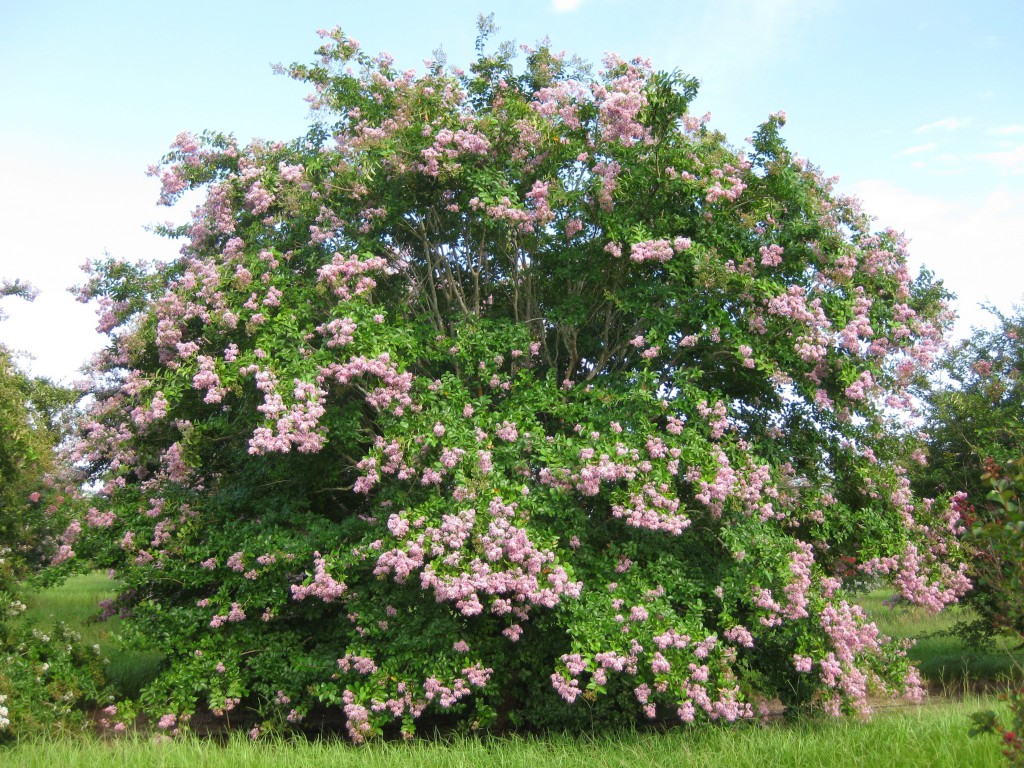
Figure 3. With proper cultivar selection and placement in the landscape, crapemyrtle develops into a beautifully shaped tree that rarely needs pruning. This crapemyrtle is ‘Muskogee’. Image Credit Gary Knox
For more information, see ENH1138, Crapemyrtle Pruning.
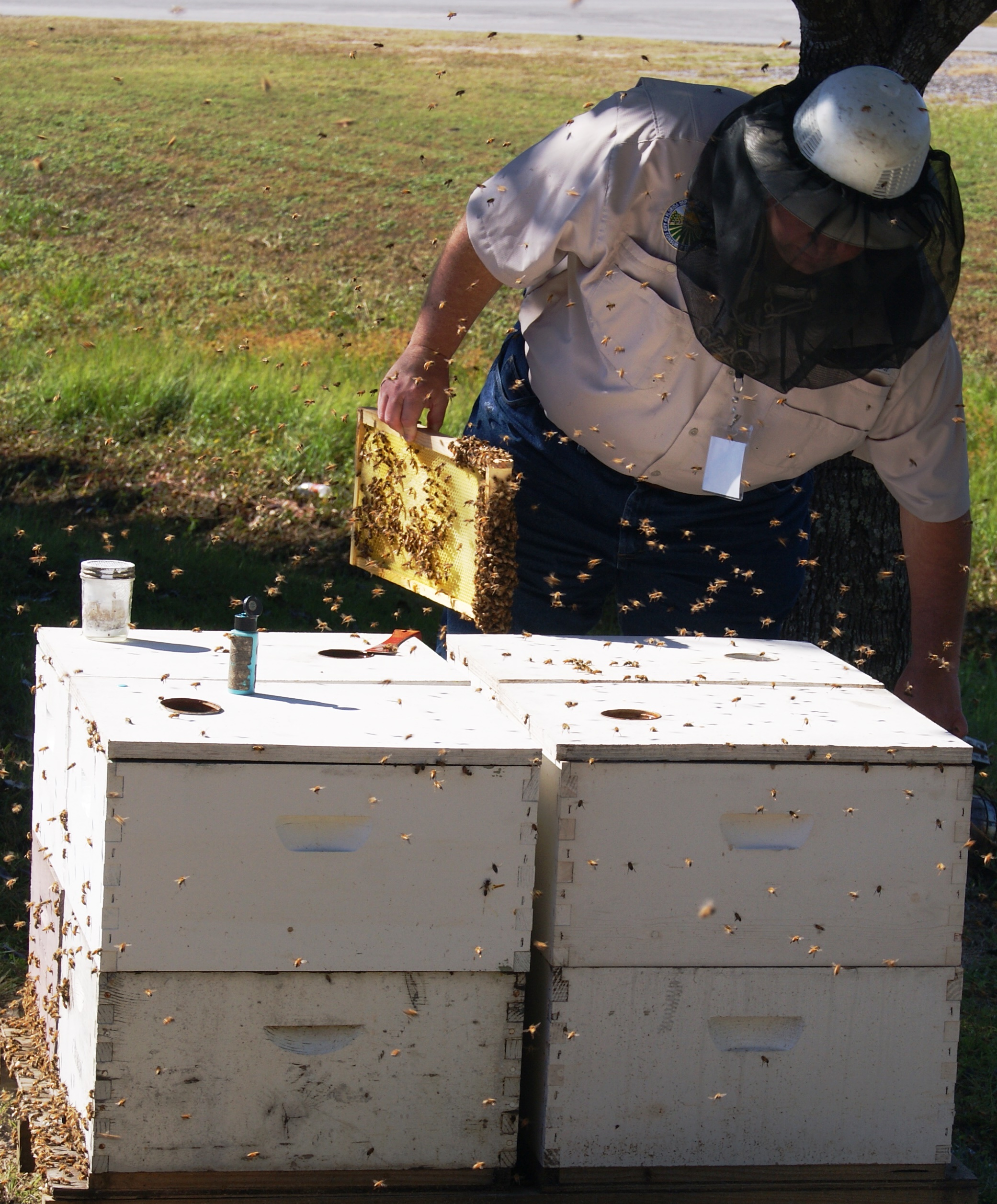
by Judy Biss | Feb 7, 2014

Photo by Judy Ludlow
The UF/IFAS Panhandle Agriculture Extension Team will once again be offering a Basic Beekeeping School in February and March. These classes will be offered via interactive video conferencing at Extension Offices across the Panhandle. Details are listed below, please call your local UF/IFAS Extension Service to register and if you have any questions. See you there!
- These classes will be taught by Dr. Jamie Ellis and other state and nationally recognized beekeeping experts from the University of Florida Honey Bee Research and Extension Lab and the Florida Department of Agriculture & Consumer Services Bureau of Plant and Apiary Inspection.
- There will be three Monday-evening and one Tuesday evening interactive video conferences from 6:00 – 8:00 pm Central time, (7-9 pm Eastern time) and a Saturday bee-yard field day.
- Each 30-50 minute presentation will be followed by a question/answer period
February 24: Honey Bee Biology and Anatomy
March 3: Varroa Mite Biology and Control
March 10: Honey Bees of the World and Beekeeping History
March 15: Bee-Yard Field-Day – A hands on teaching opportunity
March 18: Yearly Management of the honey bee
- The cost for all five classes is $25 per person or $40 for a family. This fee will cover course materials and refreshments.
- Deadline to register is February 17, 2014. Please contact your local UF IFAS Extension office to register or to find out more details, or click on the following link for a printer-friendly flyer: 2014 Beekeeping in Panhandle
Bay County 850-784-6105
Calhoun County 850-674-8323
Escambia County 850-475-5230
Franklin County 850-653-9337
Gadsden County 850-875-7255
Gulf County 850-639-3200
Holmes County 850-547-1108
Jackson County 850-482-9620
Jefferson County 850-342-0187
Leon County 850-606-5202
Liberty County 850-643-2229
Okaloosa County 850-689-5850
Santa Rosa County 850-623-3868
Wakulla County 850-926-3931
Walton County 850-892-8172
Washington County 850-638-6180













